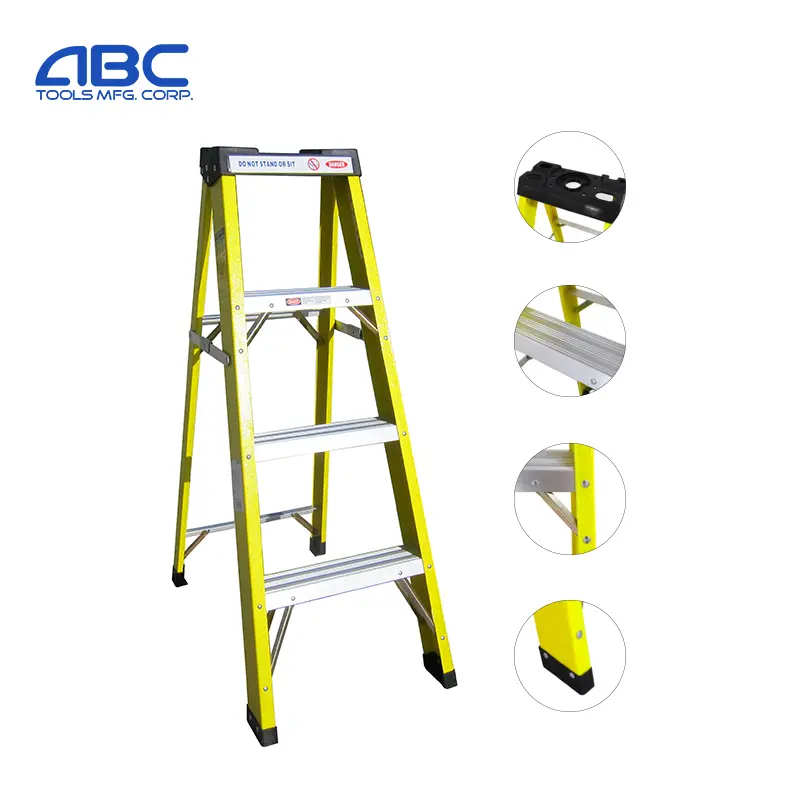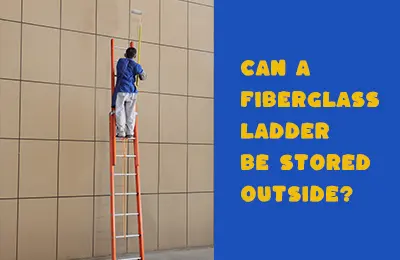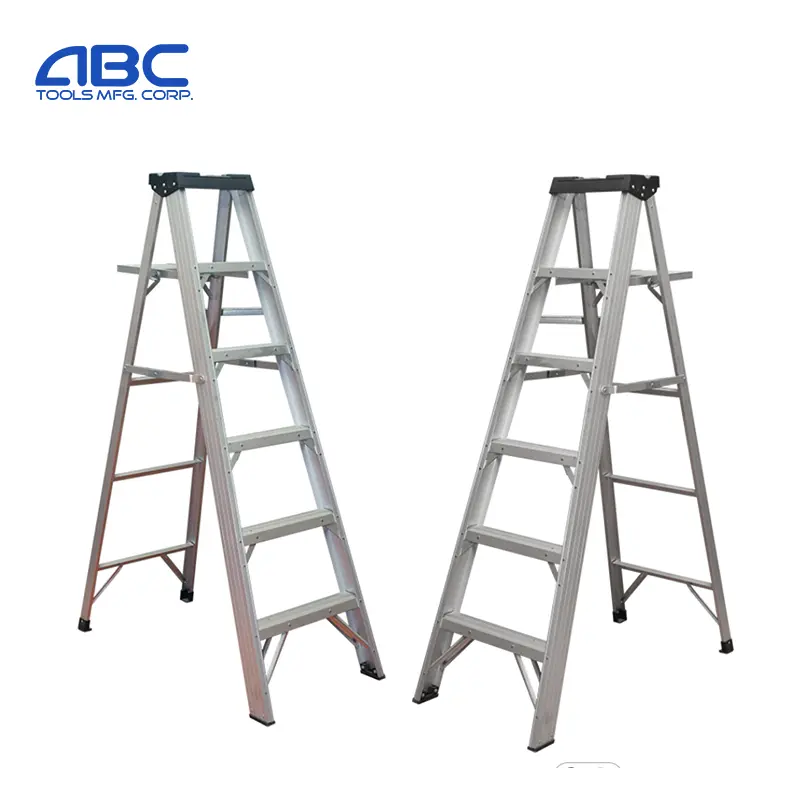Reaching high places can be a dangerous task, especially if you’re using an unstable ladder. Wobbly aluminum ladders may not support the load, and using the wrong ladder for electrical work can be hazardous. A fiberglass extension ladder solves this issue by providing a sturdy, reliable solution that ensures safety while offering high‑reach capabilities.
A fiberglass extension ladder is designed for high‑reach tasks, featuring a 300‑lb load capacity and Type IA duty rating. Its fiberglass construction makes it ideal for working near electricity, and its extendable sections allow users to access heights of up to 28 feet with ease and stability.
What is a Fiberglass Extension Ladder and Why Do You Need One?
A fiberglass extension ladder is a type of ladder that is made of durable fiberglass, which is a non‑conductive material, making it the ideal choice for use around electricity. Unlike traditional aluminum ladders, fiberglass ladders offer added safety, as they do not conduct electricity, thus reducing the risk of electrical shock. These ladders are extendable, with sections that can be adjusted to reach various heights, typically up to 28 feet.

Fiberglass ladders are commonly used in construction, maintenance, and industrial settings, where access to high‑places is required. They are preferred for their ability to handle heavy loads, and their Type IA and Type 1AA duty ratings, which can support a 300‑lb load capacity.
How Much Weight Can a Fiberglass Extension Ladder Handle?
The fiberglass extension ladder typically comes with a 300‑lb load capacity for Type IA ladders. This means it can safely carry a person, tools, and materials up to 300 lbs. Ladders with this rating are suitable for most general tasks, including industrial, warehouse, and commercial applications. For even heavier loads, there are Type 1AA ladders available, which are rated for 375 lbs.
These high weight capacities make fiberglass ladders suitable for demanding tasks such as construction, electrical maintenance, and heavy-duty warehouse work.
What are the Key Features of the Best Fiberglass Extension Ladder?
When selecting the best fiberglass extension ladder, consider the following key features:

-
Non-Conductive Material: Fiberglass is non‑conductive, making it perfect for electrical work and safer than aluminum ladders in such environments.
-
Durable Build: The fiberglass construction ensures strength, longevity, and resistance to weather and corrosion, unlike metal ladders.
-
Anti-Slip Feet: To enhance stability, look for ladders with anti‑slip rubber feet that grip the ground and provide added safety.
-
Wide Rungs: Choose ladders with wide anti‑slip rungs for better comfort and grip when climbing.
Why is a Fiberglass Extension Ladder Safer Than Aluminum?
The primary reason that heavy duty fiberglass extension ladders are safer than aluminum ladders is due to their non‑conductive properties. Unlike aluminum, fiberglass does not conduct electricity, which makes it the preferred choice when working near power lines or electrical equipment.
Moreover, fiberglass ladders are more durable and weather-resistant, as they are less likely to corrode or rust over time compared to aluminum. This makes them more reliable and longer-lasting in outdoor environments.
What is the Difference Between Type IA and Type 1AA Ladders?
The Type IA and Type 1AA duty ratings indicate the weight capacity and durability of the ladder. Here’s the difference:
-
Type IA: Rated for a 300‑lb load capacity, these ladders are suitable for most heavy‑duty tasks like maintenance, construction, and industrial work.
-
Type 1AA: Rated for a 375‑lb load capacity, these ladders are even more robust, designed for the most demanding tasks that require higher weight capacity.
When choosing a ladder, consider the type based on your load capacity needs and the tasks you intend to perform.
How to Choose the Right Fiberglass Extension Ladder for Your Needs
Choosing the right fiberglass extension ladder depends on several factors:

4 Step single side foldable aluminum step ladder with handle and shelf for indoor or outdoor use
-
Height Requirement: Ensure that the ladder can extend to the necessary height for your job. For example, a 24-foot fiberglass extension step ladder is ideal for reaching high‑places like roofs or tall buildings.
-
Duty Rating: Consider the weight you’ll be carrying. If you’re only using the ladder for light tasks, a Type IA ladder (300 lbs capacity) will suffice. For heavier tasks, choose a Type 1AA ladder.
-
Portability: If you need to move the ladder frequently, look for lightweight aluminum ladders or those that are easy to store and transport.
-
Stability: Ensure the ladder has anti‑slip features and sturdy side rails for maximum safety.
Understanding Duty Ratings and Load Capacities
The duty rating and load capacity are essential factors to consider when choosing a ladder. The Type IA rating is sufficient for most tasks and can support up to 300 lbs, while Type 1AA ladders can support up to 375 lbs. Understanding the load capacity ensures that the ladder is strong enough to hold you and your equipment safely.
Additionally, fiberglass ladders are durable and weather‑resistant, making them a reliable choice for tough environments.
Why You Should Choose a 24‑foot Fiberglass Extension Ladder
A 24-foot fiberglass ladder is a versatile and ideal choice for high‑reach tasks. It provides access to areas like rooftops, ceilings, and tall shelving units. It is compact enough to be transported but extends long enough to reach high points safely. The fiberglass material ensures that it can withstand various weather conditions without compromising on safety.
The Importance of Anti‑Slip Features in Fiberglass Ladders
Safety is the top priority when using any ladder. The anti‑slip features, such as wide anti‑slip rungs and non‑slip feet, provide extra stability. This is especially important when working in wet or slippery conditions, where the risk of slipping is higher.
Maintenance and Care Tips for Your Fiberglass Extension Ladder
To ensure your extension ladder lasts for years, follow these maintenance tips:
-
Inspect Regularly: Check for any cracks, loose rungs, or damage to the side rails.
-
Clean: Regularly clean the ladder to prevent dirt buildup and ensure the rungs stay slip‑resistant.
-
Store Properly: Store the ladder in a dry, cool place to avoid exposure to the elements that can cause wear and tear.
Post time: Apr-18-2025
